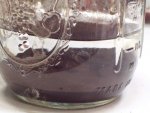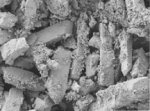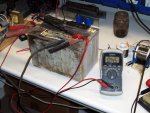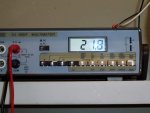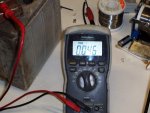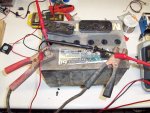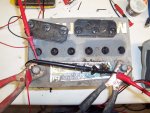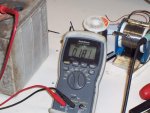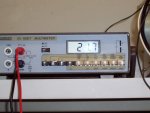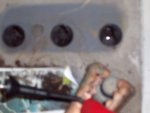Update on the rejuvenation of the regular car battery.
The car battery did not respond to any pulse or equalization measures. I therefor further researched the issue at hand. I was quite surprised to find out that the regular car batteries use a lead sulfur paste, rather then conventional Lead Plates, as in the 6TMF batteries.
This Lead Sulfur Paste is usually hardened with an internal tin wire mesh to form a rigid plate before the battery is assembled during manufacturing. Since the paste contains the Sulfur already, all is needed is distilled water and a first charge to form the electrolyte.
Our R&D battery featured here, had been deep discharged and then charged with a 35 Amp Charger, prior to rejuvenation attempts. It turned out that the lead sulfur dioxide paste had been dissolved completely from it's tin wire structure in 3 out of the 6 cells as a result of the deep discharge.
The Tin support wire structure was also completely dissolved in these three cells. There was no electrical conductivity between the top rail of each positive cell and the lead sulfur dioxide past.
The lead sulfur dioxide paste had settled between the separator sheets and partially on the bottom of the battery.
These type of batteries are basically shot the first time they experience a deep discharge and will deteriorate with each regular charge / discharge cycle anyway. Life expectancy is probably 36 month at the best and don't leave your headlights on. That will kill the battery in one setting.
These type of batteries cannot be repaired or rejuvenated at all.
Here are the pictures of one of the totally destructed cell's:
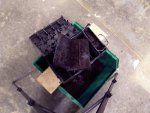
Picture of the dissolved lead sulfur dioxide paste - the long metal piece in the middle of the separator sheet is the left over tin support bracket for the tin wire frame the lead sulfur dioxide paste was once attached to:
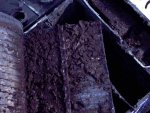
Detail Picture of the picture above:
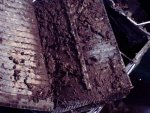
Detail Picture of the picture above:
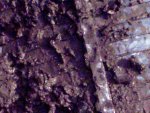
Picture of the Negative, intact lead paste plate with separator sheet removed.
The left bar is the Negative bar for this cell and the right bar is the positive bar.
One can see on how the tin wire mesh of the anode is completely gone. Only the top anchor bar for the mesh is still there:
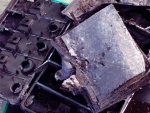
Detail view of the picture above:
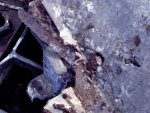
Electrolyte with dissolved lead sulfur dioxide paste which settles on the bottom:
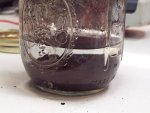
Detail Picture of Picture above:
